Wander.alは、サービスの向上のためCookieを使用しております。当社のウェブサイトを利用することにより、Cookieの使用に同意するものとします。 Cookieポリシー.
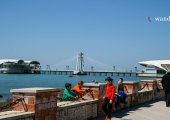
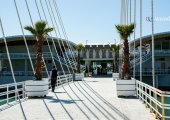
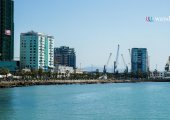
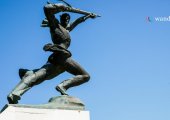
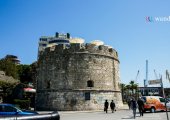

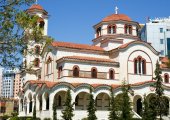

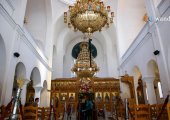
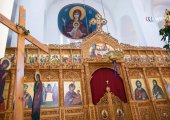
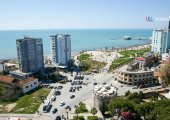

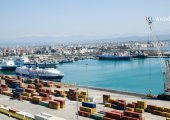
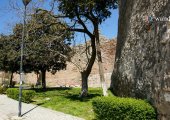
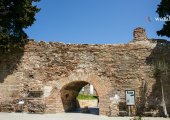
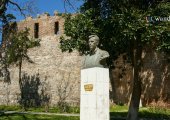
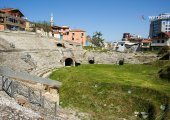
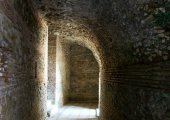
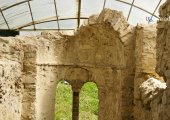
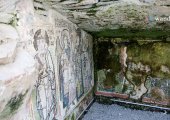
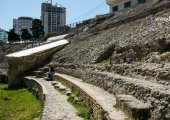


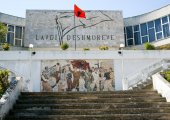
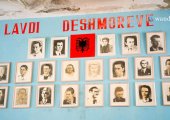
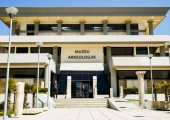

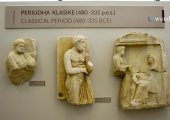

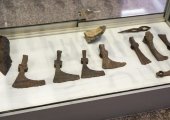
































Durrës served as Albania's national capital from 7 March 1914 until 11 February 1920 during the reign of William of Albania in Principality of Albania.
Though surviving remains are minimal, as one of the oldest cities in Albania, the city was founded as Epidamnos in the ancient region of Illyria in 627 BC. The Romans replaced the rule of Teuta with that of Demetrius of Pharos, one of her generals. He lost his kingdom, including Epidamnus, to the Romans in 219 BC at the Second Illyrian War. In the Third Illyrian War Epidamnus was attacked by Gentius but he was defeated by the Romans at the same year.
For Catullus, the city was Durrachium Hadriae tabernam, "the taberna of the Adriatic", one of the stopping places for a Roman traveling up the Adriatic, as Catullus had done himself in the sailing season of 56.
After the Illyrian Wars with the Roman Republic in 229 BC ended in a decisive defeat for the Illyrians, the city passed to Roman rule, under which it was developed as a major military and naval base. The Romans renamed it Dyrrachium. They considered the name Epidamnos to be inauspicious because of its wholly coincidental similarities with the Latin word damnum, meaning "loss" or "harm". The meaning of Dyrrachium ("bad spine" or "difficult ridge" in Greek) is unclear, but it has been suggested that it refers to the imposing cliffs near the city. Julius Caesar's rival Pompey made a stand there in 48 BC before fleeing south to Greece. Under Roman rule, Dyrrachium prospered and became the western end of the Via Egnatia, the great Roman road that led to Thessalonica and on to Constantinople. Another lesser road led south to the city of Buthrotum, the modern Butrint. The Roman emperor Caesar Augustus made the city a colony for veterans of his legions following the Battle of Actium, proclaiming it a civitas libera (free town).
In the 4th century, Dyrrachium was made the capital of the Roman province of Epirus nova. It was the birthplace of the emperor Anastasius I in c. 430. Some time later that century, Dyrrachium was struck by a powerful earthquake which destroyed the city's defences. Anastasius I rebuilt and strengthened the city walls, thus creating the strongest fortifications in the western Balkans. The 12 m (36 ft)-high walls were so thick that, according to the Byzantine historian Anna Komnene, four horsemen could ride abreast on them. Significant portions of the ancient city defences still remain, although they have been much reduced over the centuries.
Like much of the rest of the Balkans, Dyrrachium and the surrounding Dyrraciensis provinciae suffered considerably from barbarian incursions during the Migrations Period. It was besieged in 481 by Theodoric the Great, king of the Ostrogoths, and in subsequent centuries had to fend off frequent attacks by the Bulgarians. Unaffected by the fall of the Western Roman Empire, the city continued under the Byzantine Empire as an important port and a major link between the Empire and western Europe.
The city and the surrounding coast became a Byzantine province, the Theme of Dyrrhachium, probably in the first decade of the 9th century. The city remained in Byzantine hands until the late 10th century, when Samuel of Bulgaria gained control of the city, possibly through his marriage with Agatha, daughter of the local magnate John Chryselios. Samuel made his son-in-law Ashot Taronites, a Byzantine captive who had married his daughter Miroslava, governor of the city. In circa 1005, however, Ashot and Miroslava, with the connivance of Chryselios, fled to Constantinople, where they notified Emperor Basil II of their intention to surrender the city to him. Soon, a Byzantine squadron appeared off the city under Eustathios Daphnomeles, and the city returned to Byzantine rule.
In the 11th–12th centuries, the city was important as a military stronghold and a metropolitan see rather than as a major economic center, and never recovered its late antique prosperity; Anna Komnene makes clear that medieval Dyrrhachium occupied only a portion of the ancient city. In the 1070s, two of its governors, Nikephoros Bryennios the Elder and Nikephoros Basilakes, led unsuccessful rebellions trying to seize the Byzantine throne. Dyrrachium was lost in February 1082 when Alexios I Komnenos was defeated by the Normans under Robert Guiscard and his son Bohemund in the Battle of Dyrrhachium. Byzantine control was restored a few years later, but the Normans under Bohemund returned to besiege it in 1107–08, and sacked it again in 1185 under King William II of Sicily. In 1205, after the Fourth Crusade, the city was transferred to the rule of the Republic of Venice, which formed the "Duchy of Durazzo". This Duchy was conquered in 1213 and the city taken by the Despotate of Epirus under Michael I Komnenos Doukas. In 1257, Durrës was briefly occupied by the King of Sicily, Manfred of Hohenstaufen. It was re-occupied by the Despot of Epirus Michael II Komnenos Doukas until 1259, when the Despotate was defeated by the Byzantine Empire of Nicaea in the Battle of Pelagonia. In the 1270s, Durrës was again controlled by Epirus under Nikephoros I Komnenos Doukas, the son of Michael II, who in 1278 was forced to yield the city to Charles d' Anjou (Charles I of Sicily).
In c. 1273, it was wrecked by a devastating earthquake, but soon recovered. It was briefly occupied by King Milutin of Serbia in 1296.
In the early 14th century, the city was ruled by a coalition of Anjous, Hungarians, and Albanians of the Thopia family. In 1317 or 1318, the area was taken by the Serbs and remained under their rule until the 1350s. At that time the Popes, supported by the Anjous, increased their diplomatic and political activity in the area, by using the Latin bishops, including the archbishop of Durrës. The city had been a religious center of Catholicism after the Anjou were installed in Durrës. In 1272, a Catholic archbishop was installed, and until the mid-14th century there were both Catholic and Orthodox archbishops of Durrës.
Two Irish pilgrims who visited Albania on their way to Jerusalem in 1322, reported that Durrës was “inhabited by Latins, Greeks, perfidious Jews and barbaric Albanians”.
When the Serbian Tsar Dušan died in 1355, the city passed into the hands of the Albanian family of Thopias. In 1376 the Navarrese Company Louis of Évreux, Duke of Durazzo, who had gained the rights on the Kingdom of Albania from his second wife, attacked and conquered the city, but in 1383 Karl Topia regained control of the city. The Republic of Venice regained control in 1392 and retained the city, known as Durazzo in those years, as part of the Albania Veneta. It fended off a siege by the Ottoman Sultan Mehmed II in 1466 but fell to Ottoman forces in 1501.
Durrës became a Christian city quite early on; its bishopric was created around 58 and was raised to the status of an archbishopric in 449. It was also the seat of a Greek Orthodox metropolitan bishop. Under Turkish rule, many of its inhabitants converted to Islam and many mosques were erected. This city was renamed as Dıraç but did not prosper under the Ottomans and its importance declined greatly. By the mid-19th century, its population was said to have been only about 1,000 people living in some 200 households. Its decrepitude was noted by foreign observers in the early 20th century: "The walls are dilapidated; plane-trees grow on the gigantic ruins of its old Byzantine citadel; and its harbour, once equally commodious and safe, is gradually becoming silted up." It was a main centre in Shkodra Vilayet before 1912.
Durrës was an active city in the Albanian national liberation movement in the periods 1878-1881 and 1910-1912. Ismail Qemali raised the Albanian flag on November 26, 1912 but the city was occupied by the Kingdom of Serbia three days later during the First Balkan War. On November 29, 1912, Durrës became the county town of the Durrës County, one of the counties of the Kingdom of Serbia established on the part of the territory of Albania occupied from Ottoman Empire.
The city became Albania's second national capital (after Vlora) on March 7, 1914 under the brief rule of Prince William of Wied. It remained Albania's capital until February 11, 1920 when the Congress of Lushnjë made Tirana the new capital.
During the First World War, the city was occupied by Italy in 1915 and by Austria-Hungary in 1916-1918. It was captured by the Allies in October 1918. Restored to Albanian sovereignty, Durrës became the country's temporary capital between 1918 and March 1920. It experienced an economic boom due to Italian investments and developed into a major seaport under the rule of King Zog, with a modern harbour being constructed in 1927.
An earthquake in 1926 damaged some of the city and the rebuilding that followed gave the city its more modern appearance. During the 1930s, the Bank of Athens had a branch in the city. The Second World War saw Durrës (called Durazzo again in Italian) and the rest of Albania being annexed to the Kingdom of Italy between 1939–1943, then occupied by Nazi Germany until 1944. Durrës's strategic value as a seaport made it a high-profile military target for both sides. It was the site of the initial Italian landings on 7 April 1939 (and was fiercely defended by Mujo Ulqinaku) as well as the launch point for the ill-fated Italian invasion of Greece. The city was heavily damaged by Allied bombing during the war and the port installations were blown up by the retreating Germans in 1944.
The Communist regime of Enver Hoxha rapidly rebuilt the city following the war, establishing a variety of heavy industries in the area and expanding the port. It became the terminus of Albania's first railway, begun in 1947. In the late 1980s, the city was briefly renamed Durrës-Enver Hoxha. The city was and continues to remain the center of Albanian mass beach tourism.
Following the collapse of communist rule in 1990, Durrës became the focus of mass emigrations from Albania with ships being hijacked in the harbour and sailed at gunpoint to Italy. In one month alone, August 1991, over 20,000 people migrated to Italy in this fashion. Italy intervened militarily, putting the port area under its control, and the city became the center of the European Community's "Operation Pelican", a food-aid program.
In 1997, Albania slid into anarchy following the collapse of a massive pyramid scheme which devastated the national economy. An Italian-led peacekeeping force was controversially deployed to Durrës and other Albanian cities to restore order, although there were widespread suggestions that the real purpose of "Operation Alba" was to prevent economic refugees continuing to use Albania's ports as a route to migrate to Italy.
Following the start of the 21st century, Durrës has been revitalized as many streets were repaved, while parks and façades experienced a face lift.
Durrës is an important link to Western Europe due to its port and its proximity to the Italian port cities, notably Bari, to which daily ferries run. As well as the dockyard, it also possesses an important shipyard and manufacturing industries, notably producing leather, plastic and tobacco products. The southern coastal stretch of Golem is renowned for its traditional mass beach tourism having experienced uncontrolled urban development. The city's beaches are also a popular destination for many foreign and local tourists, with an estimated 800,000 tourists visiting annually. Many Albanians from Tirana and elsewhere spend their summer vacations on the beaches of Durrës. In 2012, new water sanitation systems are being installed to completely eliminate sea water pollution. In contrast, the northern coastal stretch of Lalzit Bay is mostly unspoiled and set to become an elite tourism destination as a number of beach resorts are being built since 2009. Neighboring districts are known for the production of good wine and a variety of foodstuffs.
The port has experienced major upgrades in recent years culminating with the opening of the new terminal in July 2012. In 2012, The Globe and Mail ranked Durrës at no. 1 among 8 exciting new cruise ports to explore.